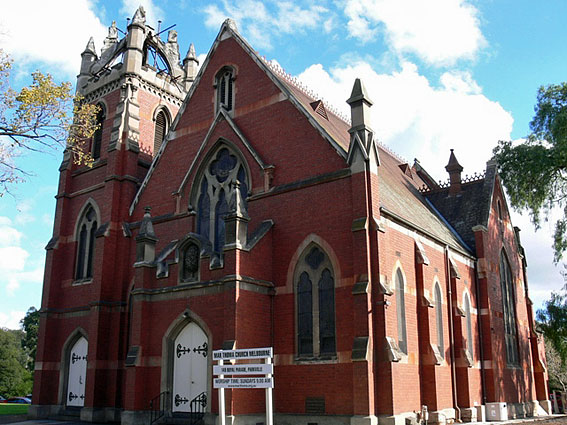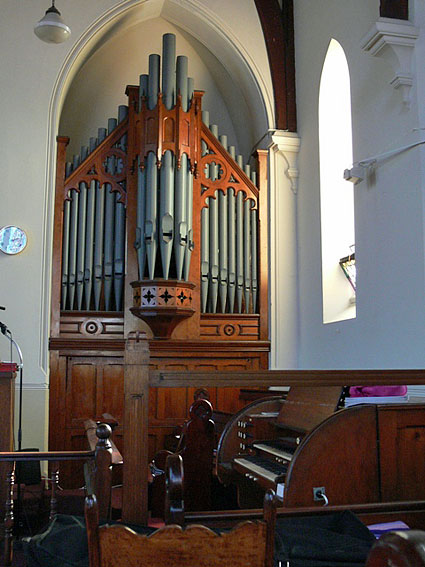College Church was designed by the noted Scottish-born architect Robert A. Lawson (1833-1902) best-known for his major churches in Dunedin, New Zealand. The foundation stone was laid in November 1897 and the building, constructed by Lang Bros of Parkville, at a cost of £2170, was opened in 1898. Built from red brick with Oamaru limestone dressings, the building is of particular interest for the crown tower, where a central stone crown is supported on flying buttresses. Inspired by the crown tower at King’s College Chapel, Aberdeen University, this is the only example of such an architectural feature in Australasia although it is currently partially dismantled owing to deterioration of the stonework. The interior includes three large stained glass windows and woodwork designed by Louis R. Williams.
The organ was built by George Fincham & Son at a cost of £470 and opened in November 1903. Initially placed centrally in the apse it was moved to its present position according to a quotation sent in June 1941 by George Fincham & Sons Pty Ltd for a cost of £33-10-0. Since then there have been no changes.
GREAT |
8 8 8 4 4 2 8 8 8 8 8 4 2 8 16 8 |
gvd.bass gvd.bass TC A A |
Compass: 56/30
Detached drawstop console
3 thumb pistons to Great (duplicated by toe pistons)
3 thumb pistons to Swell (duplicated by toe pistons)
Balanced swell pedal
Tubular-pneumatic key and stop action
Mechanical manual to pedal coupling
The instrument is a unique survivor from the period:
It is the only Fincham organ of the decade to retain its original drawstop console with endolithic stop engraving and a balanced swell pedal;
All of the metal pipework (of high quality spotted metal with zinc basses CC-BB to the fluework) remains cone-tuned;
The original action remains unaltered, with external underactions to the Great and Swell and the whole operated through large-bore pneumatic tubing;
The wind system remains unaltered.
Comparable instruments are:
Loreto Abbey, Ballarat, Victoria – 1903 (unaltered apart from the introduction of stop keys and new console action in 1938);
Assembly Hall, Collins Street, Melbourne – 1905, 1910 (enlarged to three manuals in 1910 and remaining unaltered from this state);
‘Hazeldene’, Canterbury – 1909 (unaltered, retaining its stopkey console);
Sacred Heart Catholic Church, St Kilda – 1910 (unaltered apart from changes to wind system and with an original stopkey console)
The original finish of the façade pipes in unknown but it is unlikely that they were stencilled. They now have a spray-painted finish.
The instrument is in need of a total restoration and is now unplayable. The present owners, the Mar Thoma Church, are hopeful of restoring both the building (including the crown tower) and the organ. The church exterior, interior fittings, organ and the curtilage (setting) are listed on the Victorian Heritage Register and the building and organ is classified by the National Trust of Australia (Victoria).
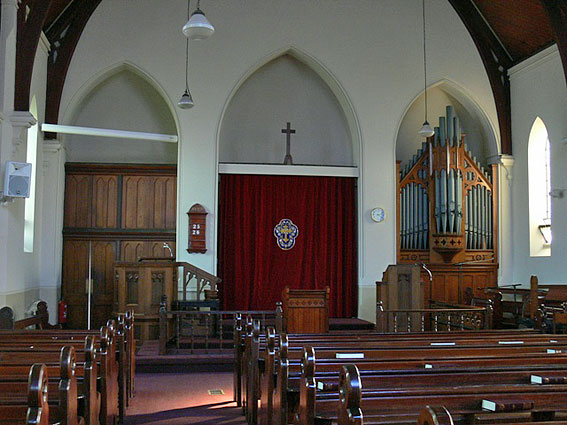
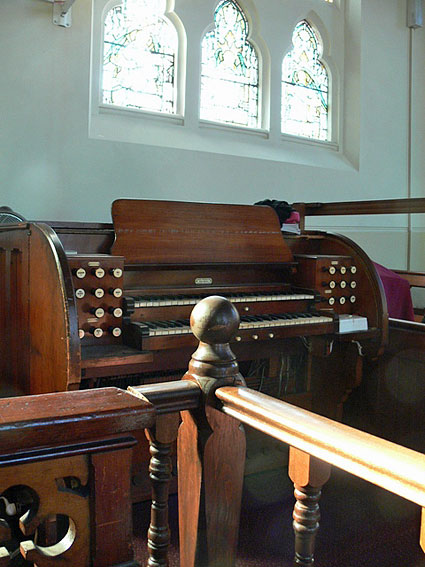
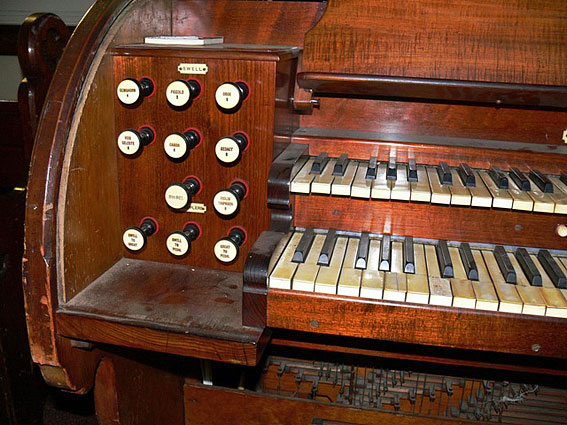
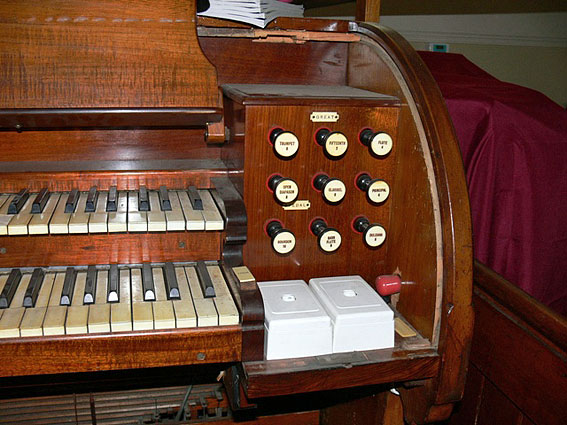
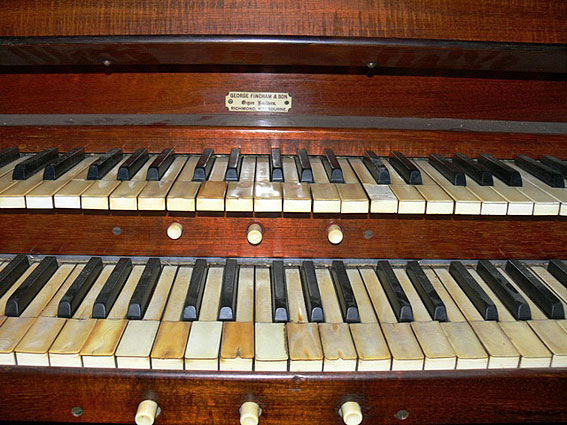
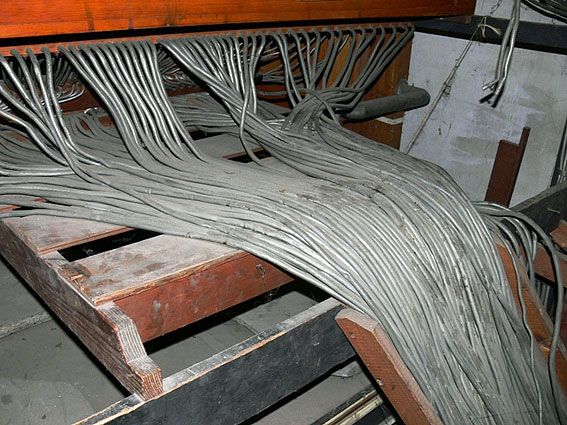
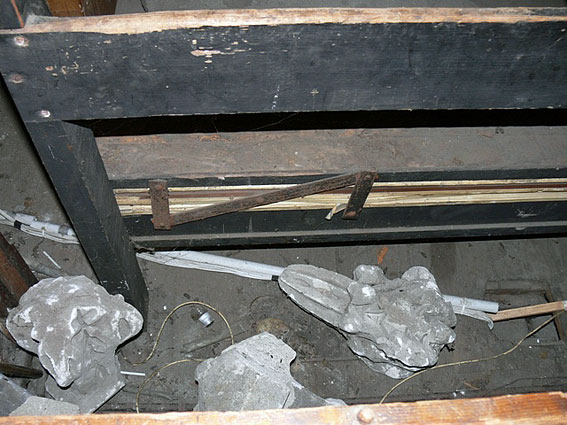


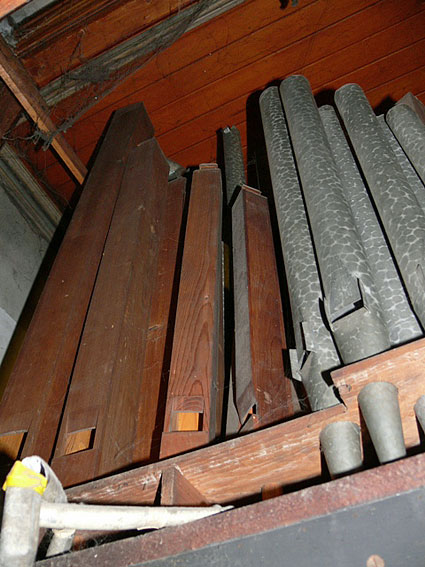
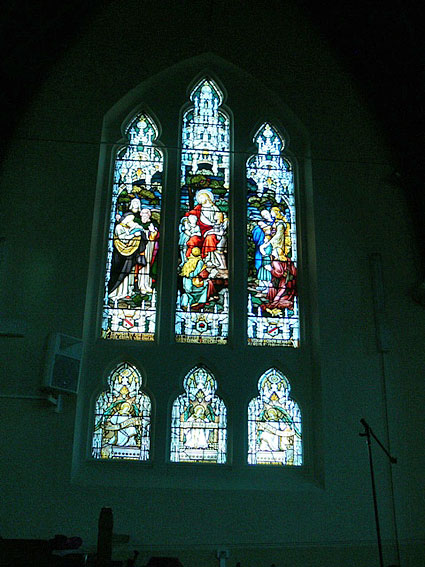



Photos: JRM (May 2009)
JOHN MAIDMENT
26 May 2009
